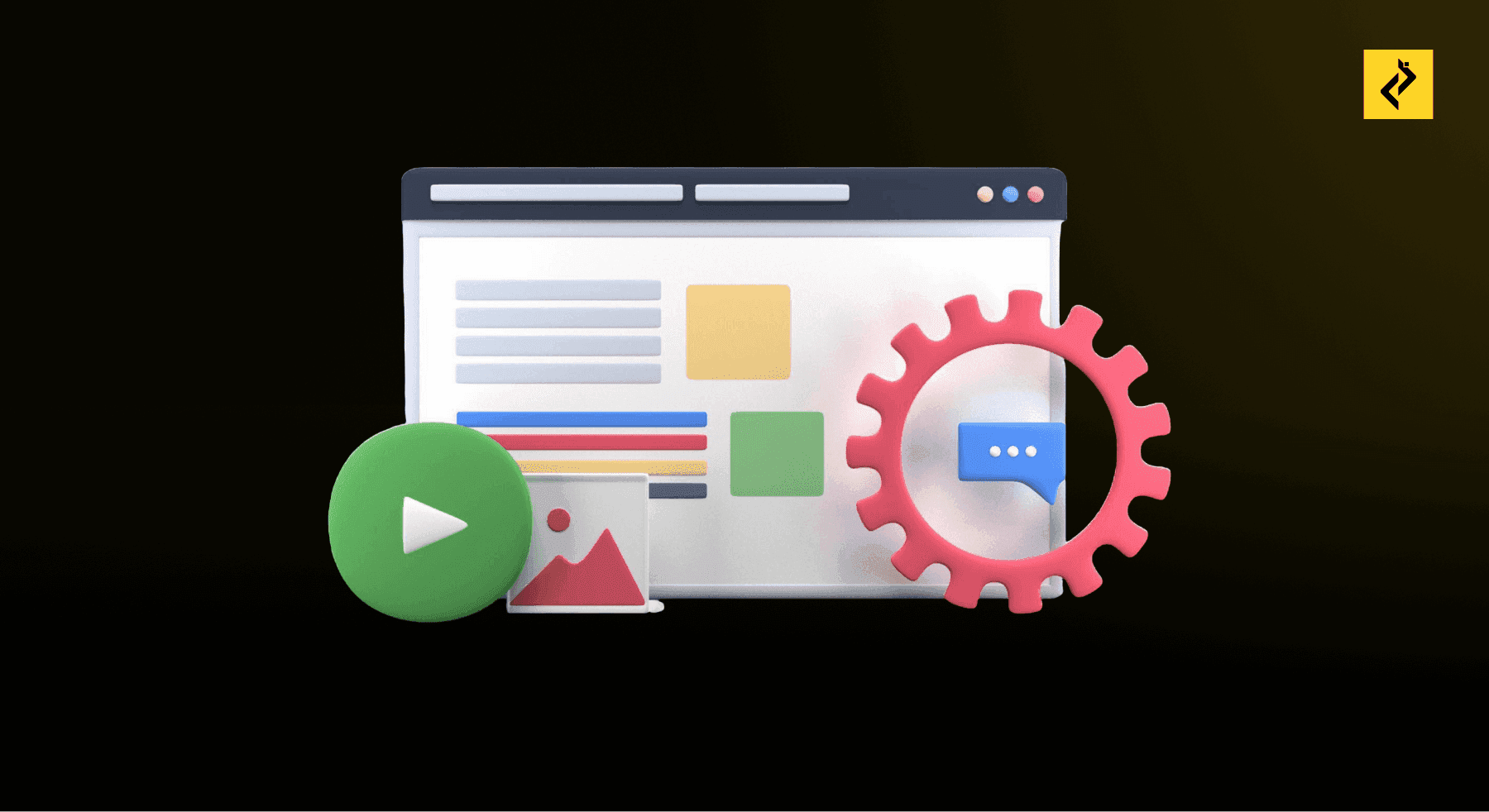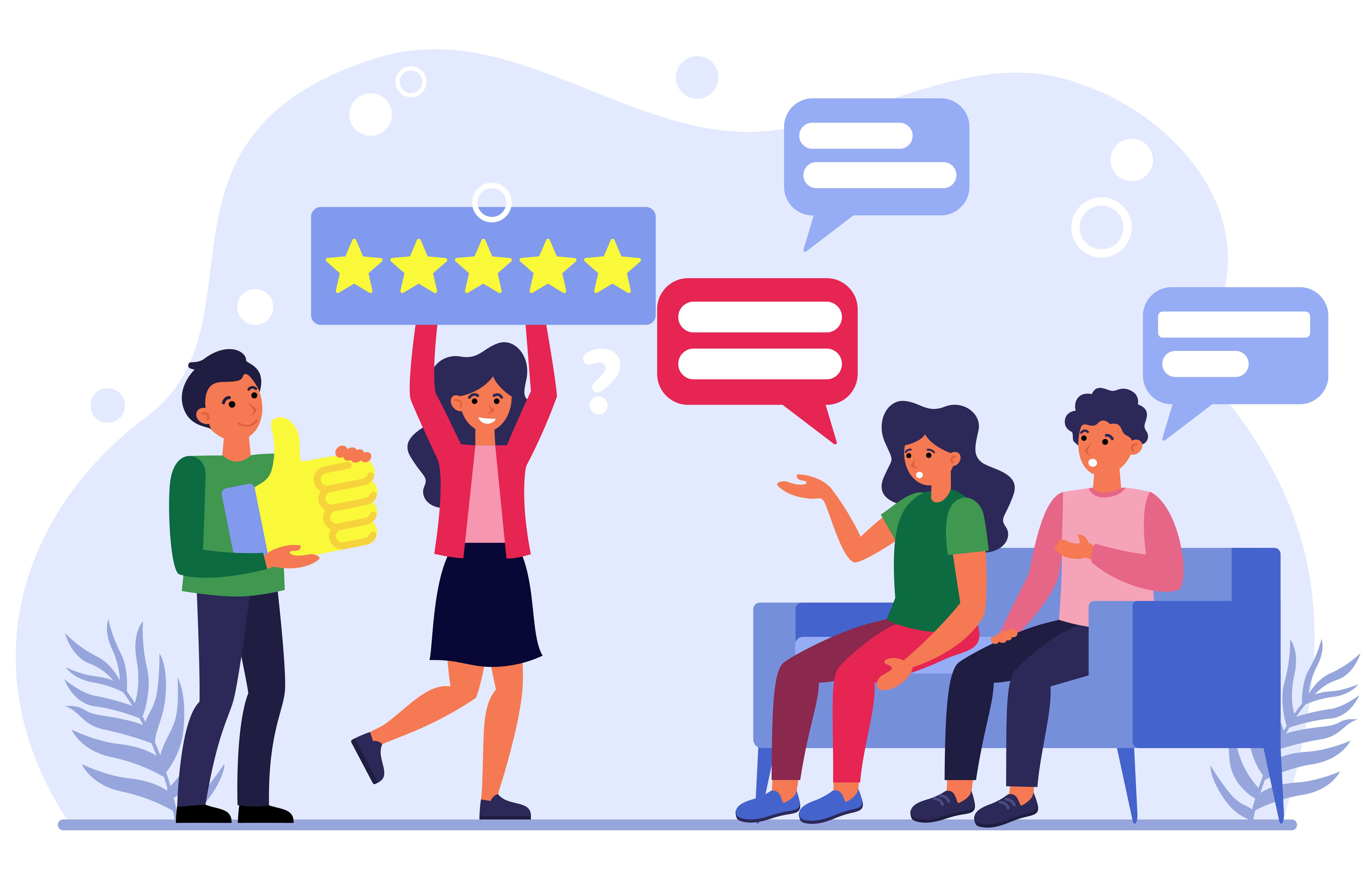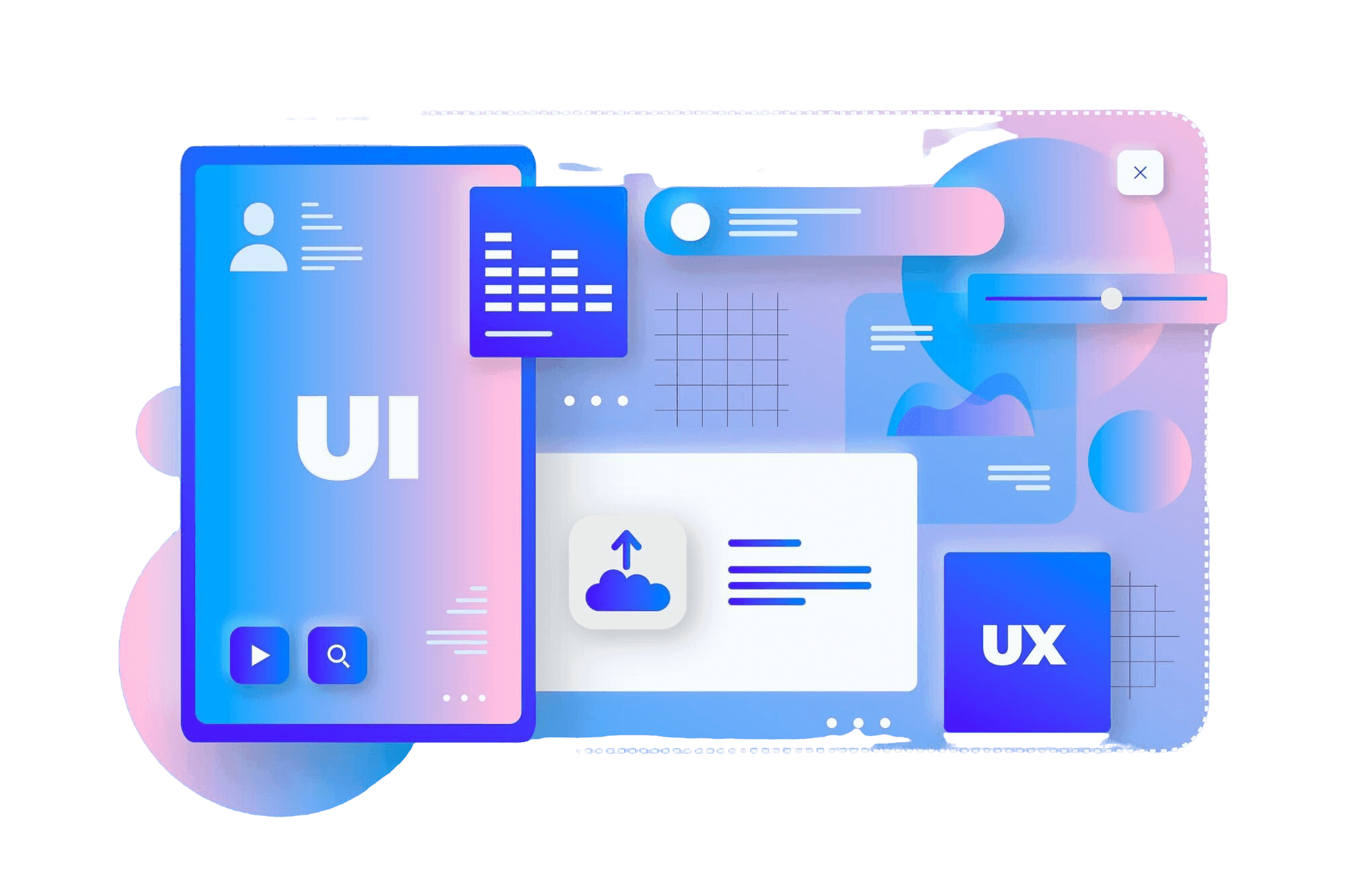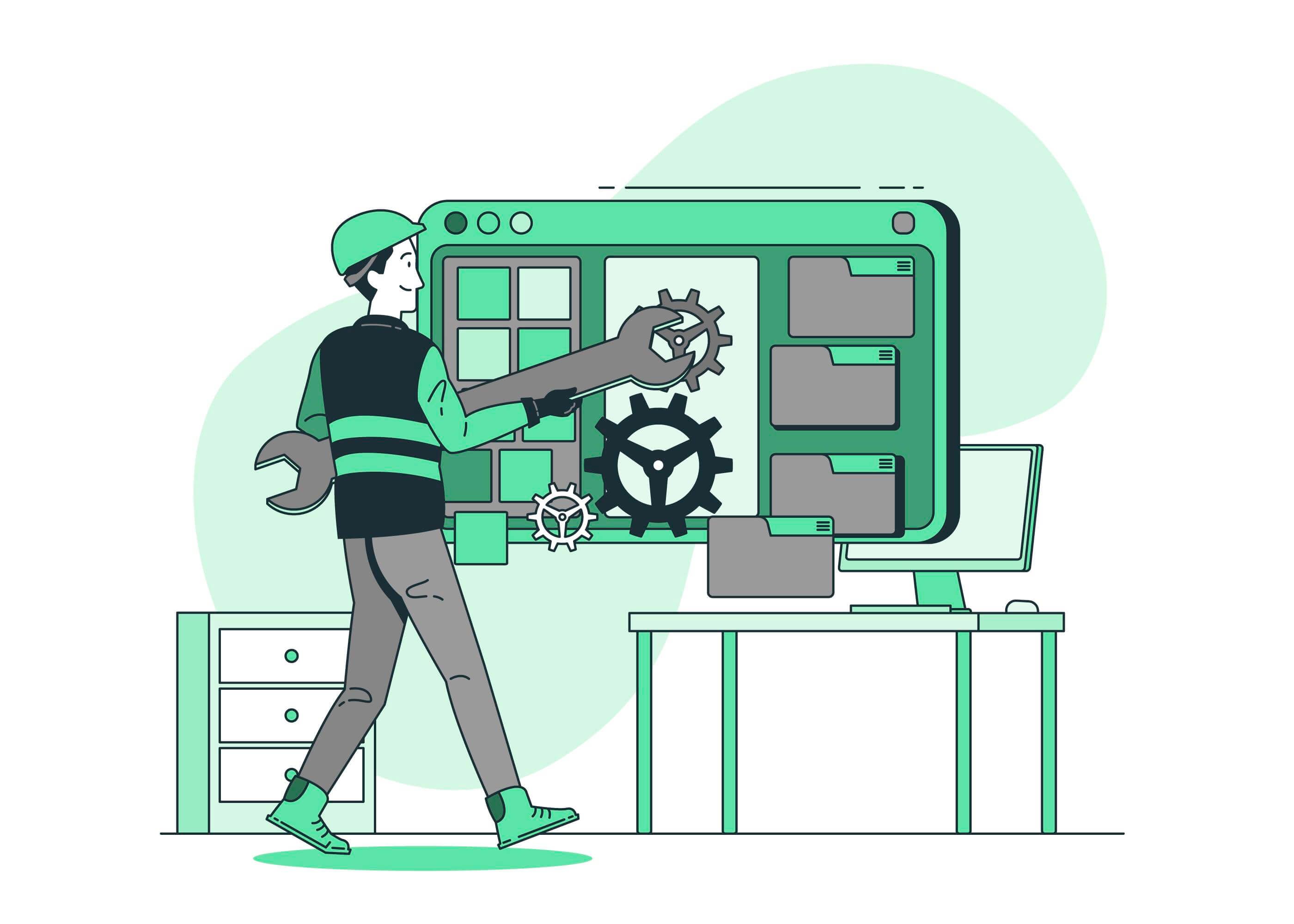How to Build a Minimum Viable Product in 2025: Tips, Tools, and Best Practices
Nidhin N P
January 2, 2025
10 Min read

Did you know there are 150 million startups worldwide? Yet, despite their rapid growth, the harsh reality is that 90% of businesses fail globally. 3200 startups shut down in 2023 alone.
This staggering statistic highlights the importance of careful planning and validation in the business journey. One of the most important phases in the process for any business owner or entrepreneur lies in turning an idea into a tangible product. However, how can you make sure that your notion is actually feasible before spending a lot of time, money, and resources on it?
What is an MVP, exactly? It’s a compact version of your product with just the essential functionality required to address a major issue for early adopters. But creating an MVP involves more than just testing your product; it involves confirming your hypotheses, getting important user input, and improving your product using data from the real world—all while lowering expenses and risks.
Why should creating an MVP be the top priority for a startup founder? How can you effectively create an MVP that achieves your objectives? Above all, how can you move clear of typical blunders along the way?
By giving prospective business owners, product managers, and company founders a thorough manual on MVP development, we’ll go over everything you need to know about how to build a minimum viable product and launch it successfully.
What Is MVP Development?
Have you ever wondered how successful startups manage to test their ideas without burning through all their resources? This is where MVP development comes into play.
The concept of MVP (Minimum Viable Product) originates from the Lean Startup methodology, developed by Eric Ries. But what exactly does this methodology emphasize? It emphasizes a continuous customer feedback loop, validated learning, and incremental product releases—a procedure meant to optimize productivity and reduce waste.
So, why is the MVP such a critical tool in this approach? It allows you to:
- Test your core business hypotheses without a massive upfront investment.
- Collect actionable data based on real-world user behavior.
- Validate your business idea before committing to a fully functional product.
Think about how can you ensure that your idea truly resonates with users? Before investing time and resources in development, wouldn’t it be preferable to find any possible errors in your assumptions?
By focusing on the essential features that solve a specific problem for your target audience, an MVP app development acts as the perfect starting point for turning your ideas into reality. Developing the right solution that satisfies your client’s needs is more important than making the ideal product right away.
Why Build An MVP?
Building a minimum viable product software is more than just a tactical decision—it’s a strategic approach to making your idea come up to a realistic point of being a tangible, market-ready solution. But why is it so crucial for startups and entrepreneurs?
- Validate Your Idea Before Investing Heavily: How do you know if your idea resonates with your target audience? A minimum viable product software development helps you test the waters. Instead of committing all your resources to a full-fledged product, an MVP allows:
- Validate your assumptions
- Identify whether your solution addresses a real pain point.
- Evaluate the market demand before moving into large-scale development.
- Save Time And Resources: Developing a complete product can take months or even years, costing you a fortune. What if you could achieve 80% of the results with 20% of the effort? With an MVP, you focus on the core features that matter most to users, ensuring you:
- Avoid unnecessary features that inflate budgets.
- Deliver a product faster, getting it into users’ hands quickly.
Why spend time perfecting a feature no one might use when you can prioritize what matters?
- Collect Real User Feedback Early: A minimum viable product app development lets you engage with real users early in the process. This hands-on interaction provides invaluable insights into:
- What users love about your product
- What needs improvement?
- What additional features do they want?
- Reduce Risks: Launching a product is inherently risky. What if the market response isn’t what you expect? An MVP helps you reduce these risks by:
- Testing the product on a smaller scale
- Iterating based on user data before scaling up. Isn’t it better to fail small, learn quickly, and pivot effectively if needed?
- Attract Investors And Secure Funding: Investors want proof that your idea works—and nothing demonstrates that better than a functioning MVP with user traction. A well-executed MVP can:
- Show that there’s demand for your solution.
- Highlight your ability to execute and adapt
- Build confidence in your business model
- Enter The Market Faster: Speed matters in the competitive startup ecosystem. The quicker you get your product into the market, the sooner you can:
- Establish your presence in the market.
- Gain a competitive edge
- Start generating revenue
- Build A Strong Foundation For Growth: An MVP is not the final destination—it’s the starting point. By launching with essential features and iterating based on feedback, you create a strong foundation for a product that:
- Scales efficiently.
- Adapts to changing market needs.
- Continuously delivers value to users
Building an MVP is the smartest, most efficient way to validate your idea, minimize risks, and set your product up for long-term success. Whether you’re aiming to test the waters, secure funding, or gain a competitive edge, an MVP is your absolute opportunity to achieve these goals.
So, why build an MVP? The better question might be: Why wouldn’t you?
MVP vs. Prototype vs. Proof of Concept vs Full-Scale Product
Even though the MVP is a powerful tool for startups, it’s important to distinguish it from other key stages in the product development lifecycle. Each serves a unique purpose, and understanding these differences helps you decide where to start based on your goals and resources.
- Prototype
A prototype is a low-fidelity or unfinished version of your product, primarily used to demonstrate fundamental functionality, design, or workflow. Prototypes are valuable for visualizing ideas and testing specific features but are not meant to define market viability or user demand.
When to start with a prototype?
- If your idea relies on innovative or complex technologies that haven’t been tested in the market.
- When you’re unsure if your technical approach will work as intended.
Why Start With A Prototype?
Prototypes are quick and inexpensive to create, allowing you to iterate on ideas before committing to development. They are ideal for ensuring that your design aligns with user expectations.
- Proof of Concept (PoC)
A proof of concept demonstrates whether a particular idea or technology is technically feasible. Unlike an MVP, the focus of a PoC is not on solving user problems or validating market demand but on proving that the solution can be built:
When to start with a PoC?
- If your idea relies on innovative or complex technologies that haven’t been tested in the market.
- When you’re unsure if your technical approach will work as intended.
Why start with a PoC?
PoCs are crucial when you’re exploring uncharted territory in technology. They help minimize risks by confirming the technical feasibility of your solution before you invest in further development.
- Minimum Viable Product (MVP)
An MVP is a functional version of your product with just enough features to solve a core problem for your target audience. It’s designed to validate your assumptions, collect user feedback, and determine whether your idea resonates with the market.
When to start with an MVP?
- If you’ve validated your technical feasibility (via a PoC) or finalized core designs (via a prototype).
- When you’re ready to test your business hypothesis and collect user feedback.
Why start with an MVP?
An MVP balances functionality with market validation. It enables you to identify whether your idea has real potential while keeping costs low and timeliness short.
- Full-Scale Product
A full-scale product is the final, fully developed version designed for a larger audience. It included all planned features, enhanced functionality, and optimized performance. Unlike an MVP, which focuses on solving key customer pain points, a full-scale product aims to deliver a complete, polished experience.
When to transition to a full-scale product?
- If your MVP has shown strong market demand and validated your core assumptions.
- When you’ve collected sufficient user feedback to refine and expand your feature set.
Why start with a full-scale product last?
A full-scale product requires significant investment in time, money, and resources. Starting here without validation can lead to wasted effort if the product fails to meet user expectations or market needs.
Which To Begin With And Why?
The best starting point depends on your specific goals and the stage of your idea.
- If your idea is still abstract then begin with a prototype to clarify your vision, test early designs, and gather internal feedback.
- If your idea involves untested technology then begin with PoC to ensure technical feasibility and to lower risk.
- If you’ve validated the technical and design aspects then moving with an MVP to test the market demand is the right choice as it can validate your assumptions, and gather real-world user feedback.
- If your MVP demonstrates strong traction and demand, then a transition to a full-scale product for a polished and scalable solution will be the right choice.
Why Follow This Progression?
Starting with smaller, more focused steps like a prototype or PoC minimizes risk and helps refine your idea. An MVP then allows you to validate the market need without heavy investment, providing a foundation for scaling up into a full-fledged product.
Why MVPs Are Essential For Startups
It was noted that 10% of startups fail within the first year of their commencement. And here is why MVP can be a savior; MVP (Minimum Viable Product) is a monumental tactic in the challenging business environment especially in the startup ecosystem, where resources are scarce and efficiency is essential. Setting the groundwork for long-term success provides a realistic and effective approach to testing your product idea, including users early, and reducing risks.
The Key Benefits Of Minimum Viable Product
-
Faster Time To Market: Swiftly launching your product onto the market often indicates the difference between success and trailing behind. With an MVP, startups can deliver a functional solution to clients faster by steering clear of the intricate development cycles of full-scale products. Such prompt market entries enable businesses to have early access to iterations, feedback, and accelerated growth.
-
Cost-Effectiveness: It takes a lot of time, money, and labor to develop a fully functional product. An MVP helps startups save money by concentrating exclusively on the essential features required to solve the main problems that users face. This simplified method guarantees that you make prudent financial decisions while still providing your target audience with value.
-
Early User Engagement: With MVPs, you get a priceless chance to interact with your users from day one. Based on actual user behavior and preferences, companies can obtain actionable information by presenting a working prototype. Early adopters develop loyalty and trust as a result of this feedback, it will also influence the product’s future path.
-
Reducing Risks With MVPs: Every startup has risks, particularly when introducing unproven products to the market. By validating your hypotheses in a safe, low-stakes setting, an MVP reduces these risks. Startups can utilize MVPs to test ideas, iterate based on feedback, and make necessary course corrections before scaling, rather than making a significant investment in a product that might not be well received by users. This flexible strategy increases the product’s chances of success while lowering the likelihood of failure.
-
Building Investor Confidence: Investors require proof that your solution is popular in addition to a fantastic idea. That’s exactly what an MVP offers—PoC, early user interest, and a growth path. An MVP establishes your firm as a feasible and enticing investment option by showcasing actual demand for your product. In addition to making your proposal stronger, this validation can lead to financial opportunities that can support your next phase of growth.
Types Of MVP
The concept of an MVP isn’t a one-size-fits-all. Different types of MVPs cater to different types of MVPs cater to different goals, industries, and audiences. Here are the main types of MVPs, their characteristics, and when to use them:
- Concierge MVP
A concierge MVP involves delivering your product or service manually rather than automating processes with technology. Instead of building software, you handle tasks manually to test your idea and gather customer feedback.
When to use:
- If you’re in the early stages and want to test customer interest.
- When you want to understand customer needs in depth before investing in automation.
Example: When Nick Swinmurn had the idea for Zappos, he didn’t immediately invest in warehouses or inventory. Instead, he took photos of shoes from local stores and uploaded them to a website under the domain name ‘Shoesite.com’. When a customer placed an order, he went to the store, bought the shoes, and shipped them to the customer. This simple approach allowed him to validate that people were willing to buy shoes online, proving his concept before scaling the business.
- Wizard Of Oz MVP
This type of MVP involves creating an illusion of a fully functional product, but the back-end operations are handled manually. Customers interact with what seems like a complete product, allowing you to validate the user experience and demand.
When to use:
- If you want to test the usability of your idea without building a robust system.
- When validating market interest with minimal developmental cost.
Example: When Drew Houston wanted to validate the concept for Dropbox, he didn’t start by building the full product. Instead, he created a simple video demonstration showing how Dropbox would work, seamlessly syncing files across devices. The product itself didn’t exist yet, but the video gave the impression that it did.
This Wizard of Oz MVP allowed Houston to gauge interest and collect feedback without writing a single line of code. The overwhelming response to the video validated the demand for Dropbox, giving him the confidence to build the product.
- Landing Page MVP
A Landing Page MVP involves creating a single webpage to describe your product, highlight its benefits, and include a call-to-action (CTA). This type of MVP measures interest by tracking visitor behavior and engagement.
When to Use:
- If you want to test demand before developing the product.
- When validating interest in a new feature or service.
Example: Buffer, a social media scheduling tool, started with a simple landing page MVP. Rather than building the full platform, a basic landing page was created to explain the product’s key features—helping users schedule and manage their social media posts. The page included a call-to-action for visitors to sign up for updates. When users entered their email addresses, it confirmed that there was demand for the product. This early validation allowed the team to gather feedback and refine their idea before moving forward with development.
- Piecemeal MVP A Piecemeal MVP is built using existing tools, frameworks, or third-party services rather than developing everything from scratch. This approach reduces costs and speeds up the development process.
When to Use:
- If you want to test your idea without significant investment.
- By leveraging existing tools, you can validate your concept quickly.
Example: Groupon, a popular platform for local deals and discounts, initially started with a piecemeal MVP approach. Instead of building a full-fledged platform, the founders manually curated local deals and posted them on a simple blog. When a deal was purchased, the founders would directly contact the business to arrange the discount. This hands-on method helped them test the concept of group buying and local deals without committing to complex development. By validating demand early on, Groupon was able to refine its business model before scaling up the platform.
- Single Feature MVP A Single Feature MVP focuses on delivering just one core feature that addresses a specific customer pain point. This approach helps validate the central idea without distractions from additional features.
When to Use:
- If you have identified one feature as the most critical to your solution.
- When you want quick feedback on your primary value proposition.
Example: Instagram started as a single feature MVP, focusing solely on photo sharing. Initially, the app was called “Burbn,” and it allowed users to check in at locations and share photos, but the team quickly realized that the photo-sharing feature was the most popular. They simplified the app, stripping away all other features and focusing solely on allowing users to upload and share images. This minimal version of the app validated that users were interested in photo sharing, and it set the foundation for Instagram’s explosive growth.
- Software Prototype MVP
A Software Prototype MVP involves creating a simplified, clickable version of your product to demonstrate how it works. This type of MVP is often used to attract investors or partners.
When to Use:
- If you need to show functionality without fully developing the product.
- When seeking initial funding or partnerships.
Example: Figma, a collaborative design tool, began with a software prototype MVP. Instead of fully developing the product, the team created a prototype that demonstrated the core functionality of real-time collaboration on design projects. This early version allowed users to interact with the tool and provide feedback on its design and usability. The prototype helped validate the concept of a browser-based design platform, enabling the team to refine the product based on user input before investing in full-scale development.
- Pre-Order MVP
The Pre-Order MVP allows customers to pay for a product before it's built. This validates both interest and willingness to pay, giving you early funding for development.
When to Use:
- If you want to test demand and gather upfront investment.
- When launching physical products or subscription-based services.
Example: Tesla used a pre-order MVP to validate demand for their Model 3 electric vehicle before manufacturing began. Instead of spending millions on production without knowing if people would buy, they opened up pre-orders with a refundable deposit. Potential customers were able to place their orders online, signaling strong interest in the vehicle. This approach not only validated the market demand but also helped raise funds for production. The pre-order system allowed Tesla to test the viability of the Model 3 while minimizing financial risk.
The Process of Developing an MVP
Building an MVP involves multiple stages, and understanding each one is key to creating a product that resonates with users. Here's a detailed breakdown of how to build a minimum viable product:
- Problem Identification
Every successful MVP app development begins with a clear understanding of the problem it aims to solve. This includes tackling existing problems or introducing users to artificially created problems they weren’t aware of.
What are the existing problems?
These are clear and present issues faced by your target users, often highlighted through research and data.
- Research & Feedback: Engage with potential users through surveys or interviews to uncover their challenges.
- Market Gaps: Analyze competitors to identify what’s missing or unsatisfactory in current solutions.
Example: A delivery app targeting delays in rural areas addresses a tangible, existing issue.
What are artificially created problems?
Sometimes, problems aren’t immediately obvious and need to be reframed or introduced.
- Highlight Inefficiencies: Challenge traditional methods to showcase better alternatives.
- Create Awareness: Show users how they’re losing time, money, or efficiency without realizing it.
Example: Apps like Uber showed users the inefficiency of waiting for taxis without an on-demand option. By focusing on these two dimensions, you can ensure your mobile app development MVP starts with a solid, user-focused problem definition.
- Idea Validation
Before moving into development, it’s crucial to validate your idea. The goal here is to ensure there’s a real demand for your product. Start by:
-
Conducting Market Research: Understand the problem you are solving and the market you are targeting. Survey potential users and competitors to get a sense of the demand.
-
Analyzing Competitors and Industry Trends: Look at existing solutions and identify gaps that your product can fill. Analyze how competitors are positioning themselves and what makes their solutions unique.
-
Identifying Customer Pain Points: Use qualitative and quantitative data to understand user needs. The more specific you are in identifying these needs, the more focused your MVP will be.
- Defining the Core Features
One of the most important aspects of MVP development is feature prioritization. You must determine which features are critical to solving the core problem for your users.
-
Feature Prioritization Techniques: Tools like the MoSCoW Method (Must have, Should have, Could have, Won’t have) or the Kano Model can help in identifying essential features.
-
Avoiding Feature Creep: Keep the MVP simple. Don’t get tempted to add unnecessary features that do not directly contribute to validating your assumptions.
- Building the MVP
The actual development of the MVP involves choosing the right technology and development methodology.
- Choosing the Right Tech Stack: Opt for technologies that allow for fast iteration. Consider frameworks like React for web applications or Firebase for back-end solutions to speed up development.
- Agile Methodology: Adopting Agile development enables you to work in short sprints and make iterative changes based on feedback. This flexibility is crucial for MVP development.
- Realistic Timelines and Budgets: Set timelines that are achievable for your team. Similarly, budget realistically to avoid running out of resources mid-development.
- Testing and Iterating on Your MVP

Testing and iteration are the heart of the MVP development process. Continuous feedback loops allow you to refine your product over time, ensuring it meets user needs and expectations. User feedback is essential to improving the MVP and shaping future iterations.
- Surveys and Interviews: Use surveys, one-on-one interviews, and focus groups to gather qualitative feedback.
- User Behavior Tracking Tools: Tools like Google Analytics, Hotjar, or Mixpanel can help you understand how users are interacting with your MVP.
- Launching the MVP
Once the MVP is ready, it’s time to launch. This phase is critical as it will determine how well the MVP is received by early users.
- Soft Launch: Launch the MVP to a limited audience first. This allows you to gather feedback from a controlled group before a wider release.
- Target Users for Initial Testing: Your initial testers should be people who are genuinely interested in solving the problem your product addresses. Early adopters are crucial to providing valuable insights.
- Managing Expectations: Be clear with your users about the purpose of the MVP. Ensure they understand it’s an early version, and their feedback is vital for shaping the final product.
- Analyzing Results
Collecting feedback is only valuable if you can analyze it effectively.
- Key Performance Indicators (KPIs): Measure success by tracking KPIs like user retention, conversion rates, or engagement levels. These metrics give you a sense of whether your MVP is meeting the core goals.
- Identifying Patterns: Look for recurring issues or common themes in user feedback. These insights will guide your next steps in the development process.
- Iterating Based on Feedback
Once feedback is gathered, it’s time to iterate.
- Prioritizing Changes: Not all feedback is created equal. Focus on changes that will have the greatest impact on your user experience and core functionality.
- Knowing When to Pivot or Persevere: At times, the feedback may suggest a significant shift in your product's direction. This is the point at which a decision to pivot (change direction) or persevere (continue on the current path) must be made.
Key Considerations for Developing an MVP
When developing a minimum viable product software, certain key considerations can make or break your product’s success. Here are the critical factors to keep in mind during the development process:
- Customer-Centric Approach
The core of any minimum viable product software development should be its value to the customer. Ensure that your MVP is designed with the end user in mind. The goal is not to showcase all the features but to solve the most pressing pain point effectively. Keeping the customer at the center of your decision-making process ensures that the MVP will resonate with the target audience, making it easier to gather meaningful feedback and improving the chances of market success.
- Scalability for Future Growth
While your minimum viable product app development should be lean, it’s important to keep scalability in mind. Early-stage products should be designed in a way that allows them to scale when the time comes. This doesn’t mean developing the final product from the get-go, but it’s about choosing the right tech stack and architecture that can support future iterations. Plan so that when your MVP validates product-market fit, you won’t face technical roadblocks in scaling up.
- Speed and Time-to-Market
Speed is of the essence in mobile app development MVP. The quicker you can release an MVP, the sooner you’ll get valuable customer feedback. This helps you avoid wasting time building features that users might not want or need. An MVP isn’t about perfection; it’s about providing a functioning product that allows you to collect data, analyze it, and make informed decisions for the next version of the product.
- Budget and Resource Management
Startups typically work with limited resources, so managing your budget efficiently is crucial. Determine early on how much you can afford to spend on MVP development, factoring in both development costs and marketing. By keeping your focus on the most critical features and resisting the urge to overbuild, you can keep costs down and make the most of your available resources.
- Defining Clear Metrics for Success
It’s essential to define what success looks like early on. Identify specific KPIs and metrics that will help you measure whether your MVP is meeting its goals. These could include user acquisition rates, engagement metrics, conversion rates, or customer satisfaction levels. By tracking these metrics, you can gauge the effectiveness of your MVP and decide whether to iterate, pivot, or persevere.
Avoiding Common Mistakes in MVP Development
While developing an MVP, it’s easy to make mistakes that can derail the entire process. Here are some common pitfalls to avoid:
- Overcomplicating the MVP
One of the most frequent mistakes founders make is trying to include too many features in the MVP. Remember, the goal is to build a minimum viable product that solves one core problem. Adding features beyond the basics can lead to unnecessary delays, increased costs, and confusion about the product’s purpose.
- Ignoring User Feedback
Another common mistake is disregarding early feedback from users. Some founders may become too attached to their vision and fail to listen to customers. It’s essential to remain open to criticism and use feedback as an opportunity to refine your product.
- Neglecting Marketing and User Acquisition
Even the best MVP won’t succeed without an audience. Many founders focus solely on product development and overlook the importance of marketing. Make sure you allocate resources for user acquisition strategies, whether through paid campaigns, influencer partnerships, or content marketing.
- Not Iterating Quickly Enough
Failing to iterate quickly after launching an MVP can stall the development process. Startups need to be agile, continuously improving the product based on user feedback. Waiting too long between iterations can cause you to lose the momentum built during the MVP launch phase.
- Skipping Testing
Testing is vital for identifying bugs, usability issues, and customer pain points. While you might be eager to release your MVP, skipping this step can result in a subpar user experience that could turn potential customers away.
Factors Determining the Cost of MVP Development
Building an MVP is a strategic move for startups, but understanding the factors that influence its cost is crucial for budgeting effectively. Here's a breakdown of the key elements that impact the cost of developing an MVP:
- Scope and Features
The scope of the MVP—how many features and functionalities it includes—directly affects development costs.
- Feature Complexity: Simple MVPs with basic functionality are quicker and cheaper to develop. Adding complex features like AI, payment integrations, or advanced analytics increases the time and cost.
- Prioritization: Identifying "must-have" features versus "nice-to-have" features can help reduce costs while still delivering value to users.
- Technology Stack
The choice of technology plays a critical role in MVP development costs.
- Programming Languages & Frameworks: Using widely adopted languages (e.g., JavaScript, Python) and frameworks (e.g., React, Django) can lower costs due to readily available expertise.
- Custom vs. Off-the-Shelf Solutions: Leveraging pre-existing tools, frameworks, and libraries (like Shopify, WordPress, or third-party APIs) significantly reduces costs compared to building everything from scratch.
- Integration Needs: MVPs that require integration with external tools or APIs may increase costs depending on the complexity of the integration.
- Platform Choice
The platform you choose determines the type of development required and affects the cost.
- Web App vs. Mobile App: Developing a web app is typically less expensive than creating native mobile apps for iOS and Android.
- Cross-Platform Development: Opting for cross-platform solutions like Flutter or React Native can reduce costs compared to maintaining separate codebases for iOS and Android.
- Development Team
The structure, expertise, and location of your development team have a major impact on costs.
In-House vs. Outsourcing:
- In-house teams require salaries, benefits, and infrastructure but provide more control.
- Outsourcing can reduce costs, especially when working with development agencies or freelancers in regions with lower labor costs. Team Expertise: Skilled developers and designers with relevant experience may charge more but can complete tasks faster and with higher quality. Team Size: A larger team with specialized roles (e.g., product managers, developers, QA specialists) can speed up development but increases overall costs.
- Design Complexity
Design is a crucial aspect of MVP development, as it affects user engagement and experience.

- User Interface (UI) & User Experience (UX): A simple design is more cost-effective, while custom designs with animations, advanced interactivity, or accessibility features add to development time and cost.
- Branding: If your MVP requires custom branding—like logo design, typography, and color schemes—these tasks contribute to the overall cost.
- Development Time
Time is directly proportional to cost. The longer the development period, the higher the cost.
- Agile vs. Fixed Timeline: Agile development allows flexibility but might extend timelines. A fixed timeline approach ensures faster delivery but might compromise certain features.
- Delays: Unexpected challenges or scope changes can increase the time and cost of development.
- Testing and Quality Assurance
Rigorous testing ensures your MVP is functional and bug-free, but it adds to the cost.
- Automated vs. Manual Testing: Automated testing can be faster but requires initial setup, whereas manual testing takes longer.
- Testing Phases: Testing for functionality, usability, and performance at various stages ensures quality but requires additional resources.
- Legal and Compliance
Certain legal and compliance factors may add to MVP costs, particularly in regulated industries.
- Intellectual Property (IP): Legal fees for patents, trademarks, or setting up a legal entity contribute to expenses.
- Compliance: If your MVP operates in industries with strict regulations (e.g., healthcare, finance), adhering to standards like GDPR, HIPAA, or PCI DSS requires additional development and legal efforts.
- Maintenance and Updates

Even after the MVP is launched, ongoing maintenance is essential to fix bugs, optimize performance, and incorporate user feedback.
- Bug Fixes: Post-launch issues may require immediate attention and additional costs.
- Feature Updates: As you iterate based on user feedback, adding new features or refining existing ones increases costs.
- Server Costs: Hosting and maintaining your product on a cloud platform like AWS or Google Cloud also requires a budget.
- Marketing and Launch
Launching an MVP without marketing efforts might not attract the intended audience.
- Promotional Campaigns: Investing in email campaigns, social media ads, or content marketing helps you gain traction.
- Beta Testing: Running a beta test to gather feedback may require resources for managing testers and collecting insights.
How to Optimize MVP Development Costs
To develop a cost-efficient MVP:
- Define Core Features: Focus only on features that address the primary user problem.
- Leverage Existing Tools: Use off-the-shelf solutions and frameworks where applicable.
- Choose the Right Team: Outsource or hire based on expertise and budget.
- Set Realistic Timelines: Avoid over-promising and allow time for testing and iteration.
- Plan for Scalability: Design your MVP to accommodate future growth without major overhauls.
By understanding and carefully managing these factors, you can successfully build an MVP within your budget while still delivering value to your users.
Conclusion
Developing an MVP is one of the most crucial steps for any startup or founder. It helps validate your idea, save resources, and minimize risk. However, to truly succeed, MVP development requires a deep understanding of your customer’s needs, the ability to prioritize features, and a willingness to gather and act on feedback.
Through a survey of GoodFirms , it was found that 91.3% of businesses have already launched a product with MVP. These statistics form the basic foundation for Pixbit Solutions, the mobile app development company in UAE to strive in specializing to guide startups and businesses through the MVP development journey, ensuring that your product's base is solid, customer-centric, and ready for growth. Our experienced team of developers, designers, and product strategists work closely with you to identify the core features that matter most to your target audience. From initial idea validation to building a scalable MVP that aligns with your business goals, we offer end-to-end services tailored to your unique needs.
With Pixbit Solutions expertise, the leading software development company in Dubai, you gain access to the most advanced technologies and a strategic approach to MVP development that reduces risk, enhances product-market fit, and accelerates your time-to-market. We help startups prioritize customer feedback, iterate efficiently, and launch products that resonate with users.
Partnering with us ensures that your MVP is not just a prototype, but a strategic stepping stone toward a successful product launch and long-term business growth. The MVP process is iterative: test, learn, and refine. If done correctly, your MVP will become the cornerstone of a fully-featured product that drives user engagement and sets the stage for sustained success.

Nidhin N P
Tech Lead at Pixbit Solutions
Share on
Have an idea that needs to go mobile? Launch it with us!
Have an idea that needs to go mobile? Launch it with us!
Let's Talk
Have an idea ?
Let's make it happen
Tell us your business aspirations, and let's craft a custom solution that drives business growth, ensuring satisfaction and exceeding your goals with precision.
Let's Talk